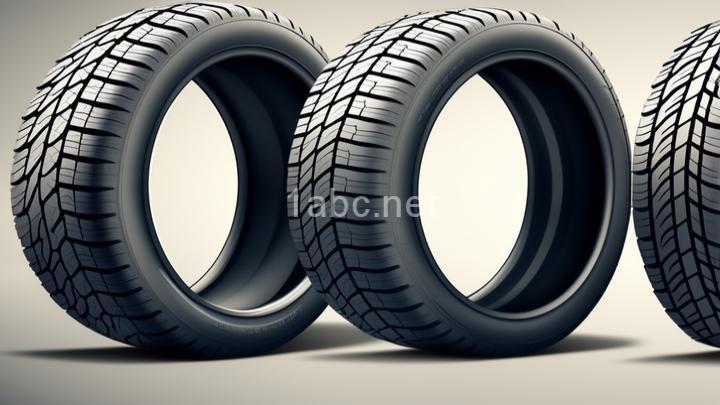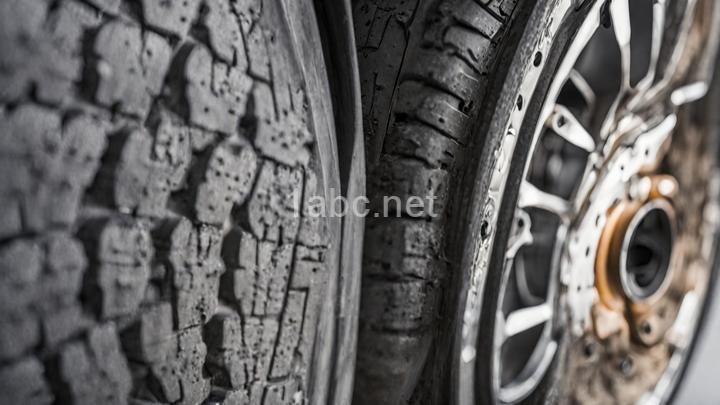What to Consider When Buying New Tires for Your Car

Introduction:
Choosing the right tires for your car is essential for maintaining safety and optimal performance on the road. With so many options available, it can be overwhelming to decide which tires are best suited for your needs. In this blog post, we will guide you through the process of buying new tires, covering everything from understanding tire size and type to evaluating tread depth and wear patterns. By the end of this article, you'll be equipped with the knowledge to make an informed decision and ensure a smooth ride for your vehicle.
I. Understanding Your Car's Tire Size and Type
A. Locating the Tire Size Information:
To determine the appropriate tire size for your car, you can refer to the information found on the sidewall of your current tires. Look for a series of numbers and letters, such as P215/65R15. This sequence indicates the tire's dimensions, including width, aspect ratio, and wheel diameter.
B. Different Types of Tires:
There are several types of tires available, each designed to perform optimally in specific conditions. All-season tires provide a balance of performance and traction in various weather conditions. Summer tires offer enhanced grip and handling for warmer climates. Winter tires are designed with specialized tread patterns and rubber compounds to provide better traction on snow and ice. It's crucial to choose the type that suits your driving needs and climate.
C. Matching Tire Type with Driving Needs and Climate:
Consider your typical driving conditions and climate when selecting tires. If you live in an area with harsh winters, investing in a set of winter tires can significantly improve your vehicle's performance and safety. On the other hand, if you primarily drive in mild weather, all-season tires may be the most practical choice.
II. Evaluating Tread Depth and Wear Patterns
A. Measuring Tread Depth:
Tread depth is essential for maintaining traction and handling. To measure tread depth, you can use the "penny test" or a tread depth gauge. Insert a penny into the tread grooves with Lincoln's head facing down. If you can see the top of Lincoln's head, it's time to replace your tires. Additionally, a tread depth gauge can provide a more precise measurement.
B. Impact of Worn-out Tires on Safety:
Worn-out tires can significantly affect your vehicle's ability to grip the road, especially in wet or icy conditions. Reduced traction increases the risk of hydroplaning and decreases braking performance. Regularly checking your tires' tread depth is crucial for ensuring your safety on the road.
C. Checking for Uneven Wear Patterns:
Uneven wear patterns on your tires can indicate alignment issues or other underlying problems. Cupping, where the tread forms a scalloped pattern, or feathering, where the tread wears down on one side, are signs of potential problems. If you notice these patterns, it's essential to have your vehicle inspected by a professional.
III. Considering Performance and Handling Characteristics
A. Factors to Consider:
When choosing new tires, factors such as grip, handling, and road noise should be taken into account. Tires with excellent grip provide better traction, allowing for improved acceleration and braking performance. Handling characteristics influence how your car responds to steering inputs, making it important to choose tires that suit your driving style. Additionally, some tires are designed to reduce road noise, providing a quieter and more comfortable ride.
B. Significance of Speed Ratings and Load Indexes:
Speed ratings and load indexes indicate the maximum speed and load capacity that a tire can handle. It's crucial to select tires that meet or exceed your car's specifications to ensure optimal safety and performance. Your vehicle's owner's manual will provide the recommended speed ratings and load indexes for your specific model.
C. Selecting Tires to Complement Your Driving Style:
Consider your driving style when choosing tires. If you enjoy spirited driving and prioritize performance, tires with better handling characteristics may be suitable. On the other hand, if you value comfort and a smooth ride, tires with a focus on comfort may be more appropriate. Finding the right balance between performance and comfort is key.
IV. Budgeting and Price Considerations
A. Establishing a Budget Range:
Before shopping for tires, it's helpful to establish a budget range. Tires come in a wide range of prices, and having a budget in mind will help you narrow down your options.
B. Factors Influencing Tire Prices:
Several factors can influence tire prices. Premium brands often come with a higher price tag due to their reputation for quality and performance. Features such as tread pattern, tread life, and sidewall design can also impact the price. Additionally, longer warranties may come at a higher cost but provide added peace of mind.
C. Balancing Cost-effectiveness with Quality and Performance:
While it may be tempting to opt for the cheapest tires available, it's essential to strike a balance between cost-effectiveness, quality, and performance. Investing in tires that offer good value for money and meet your specific needs will pay off in the long run, both in terms of safety and durability.
V. Researching Customer Reviews and Ratings
A. Reading Customer Reviews:
To gather insights from other drivers' experiences, consider reading customer reviews online. These reviews can provide valuable information about tire performance, durability, and overall satisfaction.
B. Checking Reputable Sources:
When researching tires, it's crucial to rely on reputable sources for unbiased ratings and comparisons. Websites such as Consumer Reports and Tire Rack provide comprehensive tire reviews based on rigorous testing and analysis.
C. Considering Multiple Perspectives:
While customer reviews and expert ratings are helpful, it's important to consider multiple perspectives before making a decision. Every driver has unique preferences and requirements, so gathering a variety of opinions will give you a well-rounded understanding of the tires you're considering.
VI. Seeking Professional Advice
A. Expertise of Professional Tire Dealers or Mechanics:
When in doubt, don't hesitate to seek professional advice from tire dealers or mechanics. These experts have in-depth knowledge of various tire brands and models and can provide personalized recommendations based on your specific needs and budget.
B. Asking Questions During Consultations:
During consultations with tire dealers or mechanics, don't be afraid to ask questions about specific tire brands or models. They can provide valuable insights into the performance, durability, and suitability of different options.
C. Long-term Maintenance Costs and Discounts:
In addition to considering the initial cost of the tires, it's important to factor in long-term maintenance costs. Regular tire rotations, alignments, and proper inflation can extend the lifespan of your tires and improve fuel efficiency. Additionally, inquire about potential discounts or promotions that may be available, as they can help you save money without compromising on quality.
Conclusion:
Choosing the right tires for your car is crucial for safety, performance, and overall driving experience. By understanding your car's tire size and type, evaluating tread depth and wear patterns, considering performance and handling characteristics, budgeting wisely, researching customer reviews and ratings, and seeking professional advice, you can make an informed decision that meets your driving needs and ensures a smooth and safe ride. Remember, taking the time to research and select the right tires is an investment in your vehicle's performance and your own peace of mind. Happy tire shopping!
FREQUENTLY ASKED QUESTIONS
What are the key factors to consider when buying new tires for my car?
When buying new tires for your car, there are several key factors to consider. Firstly, it's important to determine the correct tire size for your vehicle. This information can usually be found in your car's owner's manual or on the sidewall of your current tires. Ensuring that you purchase tires that are the appropriate size will help maintain the performance and safety of your vehicle.
Next, you should consider the type of driving you do and the weather conditions you typically encounter. If you live in an area with heavy rainfall or snow, you may want to opt for tires with a good wet traction or winter tires for improved grip. On the other hand, if you do a lot of highway driving, you might want to look for tires that offer a smooth and quiet ride.
Another important factor to consider is the tread life of the tires. Tread life refers to how long the tires are expected to last before needing to be replaced. This can vary depending on the tire brand and model. It's a good idea to look for tires with a high treadwear rating, as this indicates that the tires are designed to last longer.
Additionally, you should take into account your budget. Tires come in a wide range of prices, so it's important to find a balance between quality and affordability. While it may be tempting to opt for the cheapest option, keep in mind that investing in higher-quality tires can lead to better performance and longevity.
Lastly, it's always a good idea to read reviews and compare different tire brands and models. Hearing feedback from other customers can give you valuable insights into the performance and durability of the tires you are considering.
By considering these key factors - tire size, driving conditions, tread life, budget, and customer reviews - you can make an informed decision when buying new tires for your car.
How do I determine the right tire size for my car?
To determine the right tire size for your car, there are a few key factors to consider. First, you'll need to check your vehicle's owner's manual. This is usually the most reliable source for finding the correct tire size. In the manual, you'll typically find a section that specifies the recommended tire size for your particular make and model of car.
If you don't have access to your owner's manual, you can also check the sidewall of your current tires. There, you'll find a series of numbers and letters that indicate the tire size. For example, it might look something like this: P215/65R15. Each part of the code represents a different aspect of the tire size, such as the width, aspect ratio, and diameter.
Another option is to use an online tire size calculator. These tools allow you to enter your vehicle's make, model, and year to get an accurate tire size recommendation. You can find these calculators on tire retailer websites or through a quick internet search.
It's important to note that while there may be some flexibility in tire sizes, it's generally best to stick with the recommended size for your car. Using the wrong tire size can affect your vehicle's handling, fuel efficiency, and overall performance.
If you're unsure or have any concerns, it's always a good idea to consult with a professional at a tire shop or your car's manufacturer for guidance. They can provide expert advice tailored to your specific vehicle.
It represents the tire's width, aspect ratio, and rim diameter.
The tire's size, often referred to as the tire code, represents three key factors: the width of the tire, the aspect ratio, and the diameter of the rim.
What is the significance of the tread pattern?
The tread pattern on a tire plays a vital role in its performance and safety. It is not just a design feature but serves a practical purpose. The significance of the tread pattern lies in its ability to provide traction, stability, and control in various road conditions.Firstly, the tread pattern helps to channel water away from the tire's contact patch on wet roads. This reduces the risk of hydroplaning and improves grip. The grooves and sipes in the tread evacuate water, allowing the tire to maintain contact with the road surface.
Secondly, the tread pattern enhances traction on different surfaces. It consists of various patterns, including blocks, ribs, and channels, which are strategically designed to provide grip on dry, wet, and snowy roads. The tread pattern helps the tire to bite into the surface, improving acceleration, braking, and maneuverability.
Furthermore, the tread pattern helps in maintaining stability and control while driving. The grooves and blocks in the tread increase the tire's surface area, enhancing its ability to grip the road. This improves cornering and prevents skidding, ensuring a safer driving experience.
It is important to note that different tread patterns are designed for specific road conditions and purposes. For example, all-season tires may have a more versatile tread pattern to perform well in various weather conditions, while winter tires have deeper grooves and more aggressive patterns to provide excellent traction in snow and ice.
In conclusion, the significance of the tread pattern lies in its ability to provide traction, stability, and control. It plays a crucial role in ensuring safety and performance on different road surfaces and weather conditions.

